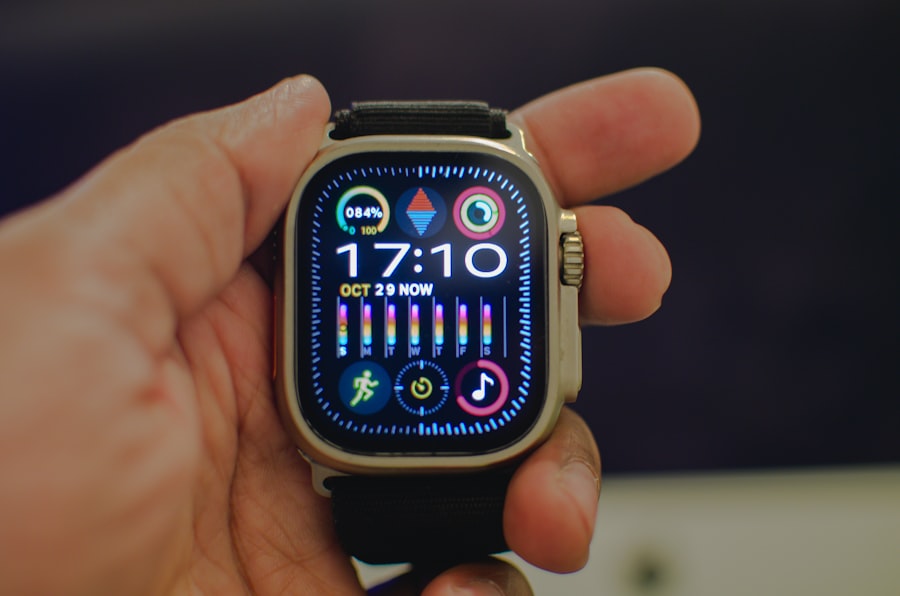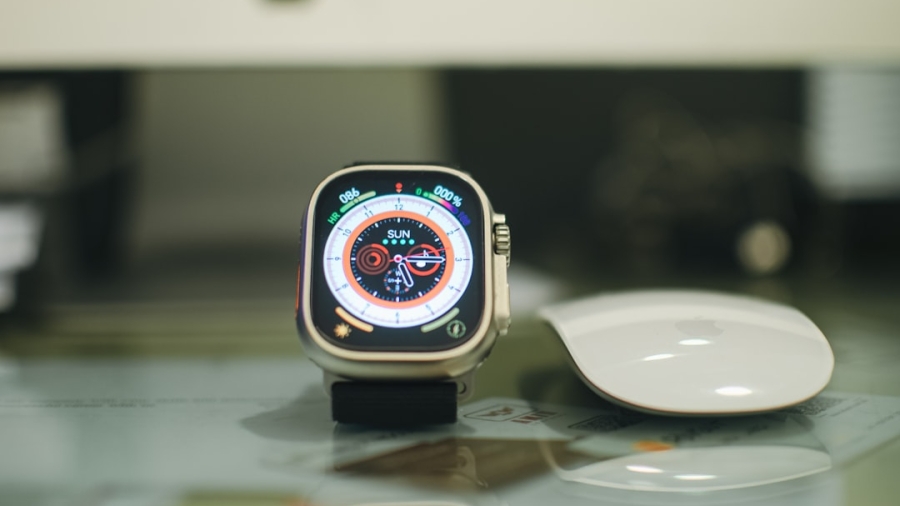Blood pressure is a critical physiological parameter that reflects the force exerted by circulating blood against the walls of blood vessels. It is typically expressed in millimeters of mercury (mmHg) and is represented by two numbers: systolic and diastolic pressure. The systolic pressure, the higher of the two numbers, measures the pressure in the arteries when the heart beats and pumps blood.
Conversely, diastolic pressure, the lower number, indicates the pressure in the arteries when the heart is at rest between beats. Normal blood pressure is generally considered to be around 120/80 mmHg, but variations can occur based on factors such as age, activity level, and overall health. Understanding these values is crucial, as both high blood pressure (hypertension) and low blood pressure (hypotension) can lead to serious health complications, including heart disease, stroke, and kidney failure.
Monitoring blood pressure is essential for maintaining cardiovascular health, especially for individuals with pre-existing conditions or those at risk of developing hypertension. Regular monitoring allows for early detection of abnormal readings, enabling timely intervention and management. Lifestyle factors such as diet, exercise, stress levels, and sleep quality can significantly influence blood pressure readings.
Therefore, understanding one’s blood pressure trends over time can provide valuable insights into overall health and wellness. With advancements in technology, individuals now have access to various tools and devices that facilitate regular monitoring, making it easier to stay informed about their cardiovascular status.
Key Takeaways
- Blood pressure is the force of blood against the walls of the arteries and is measured in millimeters of mercury (mmHg).
- Wearable blood pressure monitors use sensors to measure blood pressure and can provide continuous monitoring throughout the day.
- The accuracy and reliability of wearable blood pressure monitors can vary, and it’s important to choose a device that has been validated through clinical studies.
- Using wearable blood pressure monitors can provide convenience, early detection of potential health issues, and better management of hypertension.
- Limitations of wearable blood pressure monitors include potential inaccuracies, discomfort, and the need for regular calibration and validation.
How Wearable Blood Pressure Monitors Work
Understanding Wearable Blood Pressure Monitors
Wearable blood pressure monitors are cutting-edge devices that provide users with real-time data on their blood pressure levels. These devices typically utilize oscillometric technology, which measures the vibrations of arterial walls as blood flows through them. When a wearable monitor is activated, it inflates a cuff around the wrist or arm to temporarily restrict blood flow.
How Wearable Monitors Calculate Blood Pressure
As the cuff deflates, sensors within the device detect the oscillations in the arterial wall caused by the pulsing blood. This data is then processed to calculate both systolic and diastolic pressures, providing users with an accurate reading of their blood pressure at that moment.
Advanced Features and Connectivity Options
Many wearable blood pressure monitors are equipped with additional features that enhance their functionality. For instance, some devices can connect to smartphones or other digital platforms via Bluetooth or Wi-Fi, allowing users to track their readings over time through dedicated apps. These applications often provide visual representations of blood pressure trends, making it easier for users to understand their cardiovascular health. Furthermore, some advanced models may incorporate features such as heart rate monitoring and activity tracking, offering a more comprehensive view of an individual’s overall health status.
Empowering Users to Take Control of Their Health
This integration of technology not only simplifies the monitoring process but also encourages users to take a proactive approach to managing their health.
Accuracy and Reliability of Wearable Blood Pressure Monitors

The accuracy and reliability of wearable blood pressure monitors are paramount for ensuring that users receive trustworthy data regarding their cardiovascular health. While many modern devices are designed to provide readings comparable to those obtained from traditional sphygmomanometers used in clinical settings, variations in accuracy can occur based on several factors. For instance, improper placement of the cuff or incorrect positioning of the arm can lead to erroneous readings.
Additionally, external factors such as movement during measurement or environmental conditions may also affect the accuracy of the results. Therefore, it is essential for users to follow manufacturer guidelines closely to ensure optimal performance. Research studies have shown that while many wearable monitors can deliver reasonably accurate readings, they may not always match the precision of clinical devices under all circumstances.
Some studies indicate that wrist-based monitors may be less reliable than upper-arm models due to anatomical differences in blood flow dynamics. Consequently, users should be cautious when interpreting their readings and consider corroborating them with measurements taken using traditional methods during regular check-ups with healthcare professionals. As technology continues to evolve, manufacturers are working diligently to enhance the accuracy of these devices through improved algorithms and sensor technologies, aiming to bridge the gap between wearable monitors and traditional blood pressure measurement methods.
Benefits of Using Wearable Blood Pressure Monitors
The adoption of wearable blood pressure monitors offers numerous benefits that extend beyond mere convenience. One of the most significant advantages is the ability for individuals to monitor their blood pressure regularly without needing frequent visits to a healthcare provider. This continuous monitoring can lead to better management of hypertension or other cardiovascular conditions by allowing users to identify patterns and triggers associated with fluctuations in their blood pressure levels.
By having access to real-time data, individuals can make informed lifestyle choices—such as adjusting their diet or increasing physical activity—that may positively impact their cardiovascular health. Moreover, wearable blood pressure monitors often come equipped with features that promote user engagement and adherence to health management plans. Many devices include reminders for users to take their readings at specific times or alerts when readings fall outside normal ranges.
This functionality encourages individuals to remain vigilant about their health and fosters a sense of accountability. Additionally, the ability to share data with healthcare providers through connected apps can facilitate more informed discussions during medical appointments, allowing for tailored treatment plans based on accurate and up-to-date information about a patient’s condition.
Potential Limitations of Wearable Blood Pressure Monitors
Despite their many advantages, wearable blood pressure monitors are not without limitations that users should be aware of before relying solely on these devices for health management. One significant concern is the potential for user error during measurement. Factors such as improper cuff placement, incorrect arm positioning, or failure to remain still during readings can lead to inaccurate results.
Furthermore, some individuals may find it challenging to interpret their readings correctly without proper guidance from healthcare professionals, which could result in unnecessary anxiety or complacency regarding their health status. Another limitation lies in the variability of readings that can occur due to external factors such as stress levels, hydration status, or even time of day. Blood pressure naturally fluctuates throughout the day; therefore, a single reading may not provide a complete picture of an individual’s cardiovascular health.
Users may become overly reliant on these devices without considering other important aspects of their health or neglecting regular check-ups with healthcare providers. It is crucial for individuals using wearable monitors to maintain a balanced approach by combining self-monitoring with professional medical advice and periodic assessments.
Comparison with Traditional Blood Pressure Monitoring Methods

Traditional Methods: The Gold Standard
Traditional methods of measuring blood pressure, such as manual sphygmomanometers or automated clinic devices, have long been considered the gold standard due to their established accuracy and reliability in clinical settings. Healthcare professionals are trained to use these devices effectively, ensuring that measurements are taken under controlled conditions that minimize variability.
The Limitations of Traditional Methods
However, this method often requires visits to a healthcare facility, which can be inconvenient for individuals needing regular monitoring. This limitation can be a significant drawback for those who require frequent blood pressure checks.
The Rise of Wearable Blood Pressure Monitors
Wearable blood pressure monitors offer unparalleled convenience and accessibility for users who wish to track their blood pressure at home or on-the-go. These devices empower individuals by providing them with immediate feedback about their cardiovascular health without needing professional assistance. They also offer ease of use and continuous monitoring capabilities, making them an attractive option for those who want to take a more proactive approach to their health.
Using Wearable Monitors Effectively
While wearable blood pressure monitors offer many benefits, they may not always match the precision of traditional methods under all circumstances. As such, individuals should consider using wearable monitors as complementary tools rather than replacements for regular check-ups with healthcare providers. By using these devices in conjunction with traditional methods, individuals can gain a more comprehensive understanding of their cardiovascular health and make informed decisions about their care.
The Future of Wearable Blood Pressure Monitors
The future of wearable blood pressure monitors appears promising as advancements in technology continue to reshape how we approach health monitoring and management. Innovations in sensor technology are paving the way for more accurate and reliable devices that can provide real-time data with minimal user intervention. For instance, researchers are exploring non-invasive methods such as photoplethysmography (PPG), which uses light sensors to measure changes in blood volume in the microvascular bed of tissue—potentially allowing for continuous monitoring without the need for cuffs or inflation mechanisms.
Moreover, as artificial intelligence (AI) and machine learning algorithms become increasingly integrated into healthcare technology, wearable blood pressure monitors may evolve into sophisticated tools capable of analyzing trends over time and predicting potential health issues before they arise. These advancements could lead to personalized health recommendations based on individual data patterns, empowering users to take proactive steps toward maintaining optimal cardiovascular health. As these technologies develop further, we may see a shift toward more holistic approaches that integrate various health metrics—such as heart rate variability and activity levels—into comprehensive wellness solutions.
Tips for Using Wearable Blood Pressure Monitors Effectively
To maximize the benefits of wearable blood pressure monitors while minimizing potential inaccuracies, users should adhere to several best practices when using these devices. First and foremost, it is essential to follow the manufacturer’s instructions regarding cuff placement and measurement techniques closely. Ensuring that the cuff fits properly and is positioned at heart level can significantly enhance the accuracy of readings.
Additionally, users should aim to take measurements at consistent times each day—preferably when they are relaxed and seated—to reduce variability caused by external factors such as stress or physical activity. Another important tip is to maintain a log of readings over time and share this information with healthcare providers during routine check-ups. This practice not only helps track trends but also facilitates informed discussions about potential lifestyle changes or treatment adjustments based on accurate data.
Users should also remain aware of their device’s limitations; understanding that occasional discrepancies may occur can help mitigate anxiety related to unexpected readings. By combining self-monitoring with professional guidance and adopting a proactive approach toward cardiovascular health management, individuals can harness the full potential of wearable blood pressure monitors while ensuring they remain informed about their overall well-being.
If you’re interested in the latest advancements in health technology, particularly wearable blood pressure monitors, you might also find it useful to explore other high-tech devices that can enhance your lifestyle and productivity. For instance, consider reading about the Samsung Galaxy Tab S8, a device that promises powerful performance for both personal and professional use. You can learn more about its features and how it might complement health-tracking technologies by visiting

